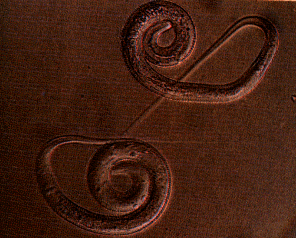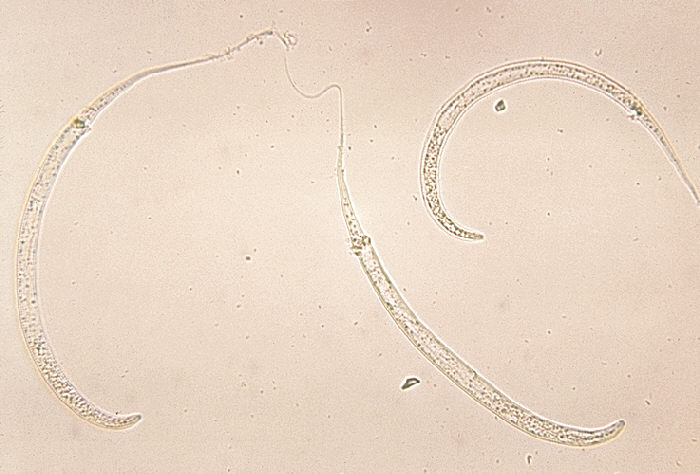Form and Function

Dracunculus medinensis is one of multiple other parasitic nematodes such as Dirofliaria immitis and Anisakis simplex. Dracunculus medinensis is interestingly one of the longest nematodes. A mature female Dracunculus medinensis can measure up to a meter long (Dawes 1971). Dracunculus medinensis is different from filarial worms as it does not have two uteri, but it has one large uterus. It has a plugged vulva in which the uterus extends most of the body. It allows the Dracunculus medinensis to have large amounts of larvae. It can have upwards of 1 to 3 million larvae in its uterus at once (Cairncross 2002). This adaption allows for more larvae the possibility to survive when trying to find a copepod because the larvae only have an estimated 3 days to find a copepod (Liu 2012).
Dracunculus medinensis uses a copepod to infect a human. It usually is transferred by the drinking of water that is not filtered, and the human/animal ingests the copepod
 with the larvae of Dracunculus medinensis. The key is the
copepod dies in the digestive system, and allows the larvae to go
into the wall of the infected host (CDC 2012). The Dracunculus
medinensis chooses the copepod because it is not harmed much by
the parasite. Dracunculus medinensis strategically chooses
the host it takes so it is not likely to be digested or be
responsible for the host dying because of it infecting the host (Liu
2012).
with the larvae of Dracunculus medinensis. The key is the
copepod dies in the digestive system, and allows the larvae to go
into the wall of the infected host (CDC 2012). The Dracunculus
medinensis chooses the copepod because it is not harmed much by
the parasite. Dracunculus medinensis strategically chooses
the host it takes so it is not likely to be digested or be
responsible for the host dying because of it infecting the host (Liu
2012).To enter the copepod the Dracunculus medinensis worm must be ingested by the copepod. The ingested Dracunculus medinensis worm then burrows its way into the digestive wall of the copepod. It does this by contracting its muscles and pushing its way into the intestinal wall with its penetrated head first (Dawes 1971).
When the human host is infected, males and females will reproduce. The male dies off fast so the female is the only one that will rise out of the skin. The female has multiple layers of epicuticle and one very thick cuticle on the outside shell for protection (Liu
.jpg) 2012). The Dracunculus medinensis moves around the body
after moving through the intestinal tissue. It moves by the
lymphatic system and travels around through lymph (Dawes 1971).
2012). The Dracunculus medinensis moves around the body
after moving through the intestinal tissue. It moves by the
lymphatic system and travels around through lymph (Dawes 1971).In order to release larvae the Dracunculus medinensis has adapted by protruding the uterus through the skin of the host. It causes irritation inside of the host and that creates a blister which bursts and creates a burning sensation. When cooled, the worm detects the temperature change, and then expels its larvae through the uterus (Liu 2012).
Previous Page: Habitat
Home Page
Next Page: Reproduction
